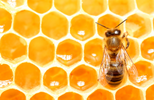
Backyard Bees 101: Is Urban Beekeeping Right for You?
, by Majella Gee, 21 min reading time

, by Majella Gee, 21 min reading time
There’s something hypnotic about a bee at work — the hum of tiny wings, the shimmer of sunlight on pollen-dusted legs, the quiet rhythm of a hive that never stops. For many, keeping bees isn’t just about honey; it’s about connection. Connection to nature, to the seasons, to the tiny creatures that keep our gardens — and our world — alive.
But before you order your first hive and dream of golden jars lined up on the kitchen bench, there are a few things you need to know. Urban beekeeping is a beautiful hobby, but it comes with responsibilities, rules, and a little sting of reality.

Why Keep Bees?
Yes, honey is a delicious reward, but the real magic is in what bees do. Every time a bee leaves your hive, it pollinates fruit trees, vegetables, herbs, and flowers — boosting your garden’s productivity and biodiversity.
Beekeeping also teaches patience and respect. Watching a hive function is like peering into a living classroom. Kids (and adults alike) learn about teamwork, life cycles, the importance of ecosystems, and why these little pollinators deserve our admiration, not fear.
And for anyone seeking calm or mindfulness, tending bees can be surprisingly grounding. There’s something meditative about standing still, veil on, smoker in hand, listening to the hum of thousands of tiny lives working in perfect harmony.
Is Beekeeping Right for You?
Before diving in, ask yourself a few simple questions:
If you’re nodding “yes,” you’re off to a great start. Beekeeping can be deeply rewarding — but it’s a commitment, not a weekend project.

In Australia, There Are Multiple Layers of Rules
Before setting up your hive, it’s important to understand the legal side. Each state and local council has its own regulations on hive numbers, placement, and registration.
Registration and Hive Identification
All beekeepers — even hobbyists with one hive — must register with their state’s agriculture department. Registration helps trace outbreaks of bee diseases and pests, and you’ll receive a Hive Identification Number (HIN) to mark your boxes.
Hive Placement and Council Rules
Councils often require:
In Queensland, for example, backyard keepers on a small suburban block may be limited to two hives, while rural or semi-rural properties can keep more, provided they’re managed responsibly and don’t create nuisance issues.
Biosecurity and Disease Monitoring
You must inspect your hives regularly for pests and diseases such as American Foulbrood, small hive beetle, and chalkbrood. Early detection and reporting protect other local hives and the broader ecosystem.
And remember — if you’re reading from outside Australia, check your own country’s local regulations before setting up. Laws vary widely, and ignorance won’t save you from fines (or angry neighbours).

Setting Up Your First Hive
Here’s what you’ll need to get started:
Where Do You Get the Bees?
Your best options:

Native Bees vs. Honey Bees
Not all bees make honey. Australia alone has over 1,500 species of native bees, from stingless social bees to solitary ground-nesters.
Native stingless bees (Tetragonula carbonaria, Austroplebeia australis) are wonderful for smaller yards — they don’t sting, they pollinate beautifully, and they’re naturally suited to our climate. Their honey (sometimes called “sugarbag”) is tangy and rare, produced in tiny amounts.
Honey bees (Apis mellifera), on the other hand, are European imports. They’re brilliant pollinators and honey producers but can compete with native species if too many hives are placed in one area. Responsible beekeeping means finding that balance — supporting both kinds.

Ethical Beekeeping and Safety
Bees don’t ask for much, but they depend on your care. Ethical keepers:
Bees and children can coexist happily. Teach kids to move calmly near the hive, not to swat, and to watch from a safe distance. Many young beekeepers grow up with a deep respect for nature thanks to these early lessons.
Common Bee Diseases and Pests
Every beekeeper needs to be familiar with a few common threats:
Regular inspections, clean equipment, and good hive hygiene are your best defences. Never buy used hive boxes or frames without knowing their history.

Bees and Kids — The Buzz on Learning
There’s no better way to teach responsibility and respect for nature. Through beekeeping, kids learn:
They’ll quickly learn that bees aren’t out to sting; they’re too busy doing their job. It’s a lesson in harmony, curiosity, and gratitude.
Fun Bee Facts 🐝

Final Thoughts
Urban beekeeping is more than a hobby; it’s a partnership. When you bring bees into your backyard, you’re inviting a miniature society into your care — one that rewards attention, respect, and learning.
It’s not for everyone, but for those who take the time to do it properly, the rewards are golden. Quite literally.
©Majella Gee 2025
#Beekeeping #UrbanBees #BackyardHives #Pollinators #HoneyBees #NativeBees #SustainableLiving #BeeFacts #EcoFriendly #MajellasPetStore